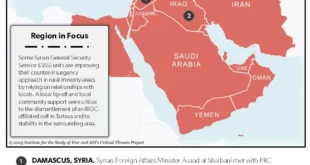Grave political implications await China in South Asia and in Indo Pacific as in April 2022, Pakistan and Sri Lanka, two of China’s most notable client States in South Asia, are in a state of economic meltdown, with the ‘Kiss of Economic Death’ implanted by China’s ‘Debt Trap Diplomacy.
China’s most vociferous supporter Pakistan PM Imran Khan stands removed in a Constitutional Coup. In Sri Lanka the Rajapaksa brothers stand politically besieged and tottering in office as President and Prime Minister. Their longevity at the helm of power is doomed with nationwide protests.
Nepal which also was tempted to strategically embrace China closely under Maoist Governments is now having second thoughts with its outreach towards India under its new Prime Minister.
When Afghanistan and Myanmar are added to this dismal geopolitical spectacle the geopolitical picture for China becomes even more pessimistic. Afghanistan is at odds with Pakistan despite the China-Pakistan Axis machinations to bring a Taliban regime in Kabul. Myanmar can be seen diluting its Chinese linkages.
Geopolitically, the portents need to be viewed from two separate, though interlinked perspectives—impact on South Asian dynamics and secondly the impact on the wider canvass of Indo Pacific security.
Both the above perspectives need to contextually correlate to China’s and Indian responses to the ongoing economic meltdown in Pakistan and in Sri Lanka.
China is perceivably reluctant to infuse more financial aid in Pakistan and in Sri Lanka when it views that economic meltdown and consequent political instability could endanger its strategic investments in these two nations.
India on the other hand can be perceived as taking political and economic initiatives to possibly fill-in the voids that China’s reluctance for bailing out Pakistan and Sri Lanka from the political and economic mess resulting from the China Strategic Embrace by political leadership of these two now hapless South Asian nations.
In South Asia, the geopolitical pendulum consequently seems to be swinging in favour of India on the rebound. These are initial indicators but worth considering, using my favourite term in my writings, as a ‘Trend in the Making’.
India has responded promptly with economic packages spanning provision of petrol, food shipments and medicines for the economically beleaguered Sri Lankan people. Ironically, the Rajapaksa brothers, who were so pronouncedly pro-China to the extent of ignoring India’s strategic sensitivities, are now ardently seeking India’s assistance.
Pakistan with its nuclear weapons smugness and long adversarial record has not sought any Indian economic assistance. However, going by repeated assertions of Pakistan Army Chief General Bajwa seeking better relations with India is a political outreach implicit in which is that Indian Pakistan policy stances have a role in Pakistan’s fragile political stability.
Seeking better relations with India by Pakistan Army Chief negates the very rationale of China’s strategic intrusiveness in South Asia. China loses heavily if Pakistan mends its relations with India synchronising with current and evolving geopolitical weightage in favour of India on the global stage.
In South Asia, it can therefore be asserted that India geopolitically gains as a result of China being in a very sticky wicket in Pakistan and Srl Lanka. It depends on the adroitness of Indian Foreign policy makers as to how they convert geoeconomics to favourable geopolitics in India’s favour in Sri Lanka.
In Pakistan, as I wrote in a piece for Pakistan’s English magazine ‘SOUTH ASIA’ published from Karachi some months back that for Pakistan ‘The Road To Peace with India’ lies in the domain of “Geoeconomics” and not through “Geopolitical” Confrontation with India. Contemporary events of China’s strategic colonial stranglehold over Pakistan and rising Anti-China sentiments within Pakistan will hasten the process of my optimism that it dawns on Pakistani Establishment that India is a better neighbour than China.
China’s diluted stranglehold over political decision makers in Pakistan and China will be beneficial for Indo Pacific security as a whole. China’s military footprints and military-client state dependency of Pakistan and China could seriously affect the vital strategic flagship China projects of China Pakistan Economic Corridor in Pakistan and the Hambantota Naval Base in Sri Lanka.
It was on the strength of these two strategic infrastructures in Pakistan and Sri Lanka that China was counting on to establish its military presence in the Western segment of Indo Pacific to challenge India and the United States.
One last observation that needs to be made contextually is that in the wake of the economic meltdown in Pakistan and Sri Lanka as a result of leaders of these two Nations jumping headlong into the cesspool of China’s ‘Debt Trap Diplomacy’ there has been a marked upsurge of Anti- China sentiments. In Pakistan killings of Chinese officials who have a sizeable presence in Pakistan has increased. Sri Lanka may not be far behind.
Concluding, China undoubtedly is on a very sticky visit in South Asia, jeopardising its crucial strategic investments in Pakistan and Sri Lanka. Its footprints consequently in Nepal, Afghanistan and Myanmar could also stand jeopardised.
Can China retrieve its predominance in South Asia after all these developments? China will desperately attempt to do so but will run into geopolitical headwinds if India both as a Regional Power in South Asia and as an Emerged Power in the global power calculus remains robust in its commitment to Indo Pacific Security Template and the QUAD.
 Eurasia Press & News
Eurasia Press & News



